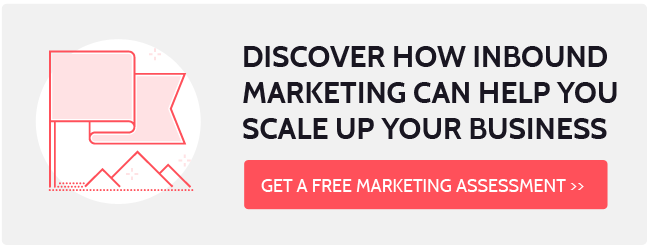Business owners have become an attractive target audience in the advertising world. Many startup companies create new tools and products for businesses and we are seeing an increase in marketing campaigns.
If you ever tried a B2B lead generation campaign, you probably already know that it can be very expensive to generate traffic and leads to that market, and in most cases the campaign results are non-effective and non-profitable.
There are three main reasons for this:
-
- Highly Competitive Market
Google Adwords platform is one of the best sources in analyzing the competitiveness of the market. In the B2B market, big brands can spend a lot of money and choose to bid very high on the most targeted keywords. As a result, it will be very expensive to advertise and compete against those brands.Because the B2B market has proven to be so profitable, it is also crowded.Many companies are competing in it and therefore paying dearly to be seen first in Google Ads or on other ad platforms. It then ends up being a very expensive market that only companies with big advertising budgets can contend in. - A Specific and Narrow Audience
The B2B audience is more complex to target. Not only because it’s only for business owners, but in most cases you want to target businesses in a specific niche. On top of that, you might also want to zone in on a specific size or type of business, or even a specific person within the business. This makes targeting challenging. - More Difficult to Convert and Close
As described previously, the B2B market is a very competitive, offering high-ticket products and services, therefore also making it more challenging to convert to sales.
Bridging the gap from generating the lead (the first step in the sales funnel) to then closing the sale can become even more difficult when the the product is expensive, and the consumer has several (sometimes less expensive) options to choose from.
- Highly Competitive Market
Targeting Tactics For B2B Campaigns:
1) Direct Offer Targeting
(A direct campaign for b2b service or product through all ads platforms.)
You can create a very direct campaign in Google Adwords using “Buying Keywords” – the exact keywords people use to search your products and services. In other platforms such as Facebook Ads you can target your audience by demographics, characteristics and even usability such as “page admins” by incorporating direct offer ads added right on their timelines.
Google Adwords Direct Targeting:

When To Use Direct Offer Targeting?
Google Adwords often sees great results, as the person who is searching the product or service has a better chance of being interested in the direct offer and converting into a lead. It can be tested immediately and shows results in no time. In Facebook ads, it might be more difficult as people are utilizing the site for more social reasons, and not necessarily searching for solutions as they scroll through their newsfeed.
When Not To Use Direct Offer Targeting?
Within the many niches of Google Adwords, you’ll find out the competition to be fierce and expensive, not always giving a positive ROI for the campaign. It can sometimes cost much to drive traffic to the offer that a large budget is needed to win the game.
Facebook Ads Direct B2B Targeting:
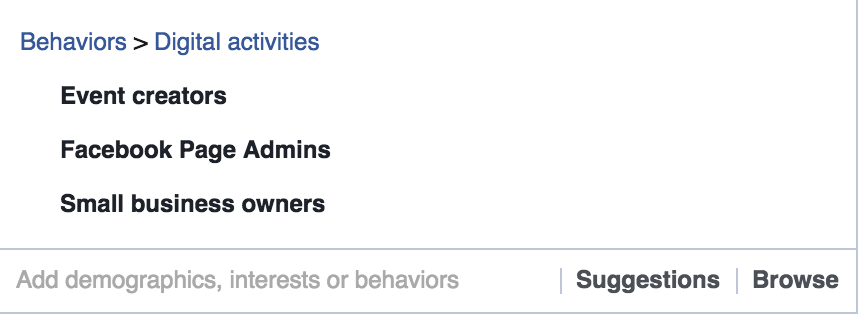
2) Wide and Indirect Targeting
When attempting to target the B2B audience indirectly, it may mean reaching them when they are not even fully sure what exact solution they are seeking. For example: If I’m selling a Task Manager Tool, the business owner might be searching in Google for “business growth strategies” or “business growth plan” (see pic.) Therefore my product may be very relevant for him.
With Facebook Ads you can reach people that have an interest in “similar products”, or have already bought tools to help business productivity.
Google Indirect Keywords:

Why Use Indirect Targeting?
This method of targeting can drive cheaper traffic with much less competition. Furthermore, it reaches a very a large audience and provides many ideas for SEO and organic traffic.
Facebook Ads Indirect Targeting Options:
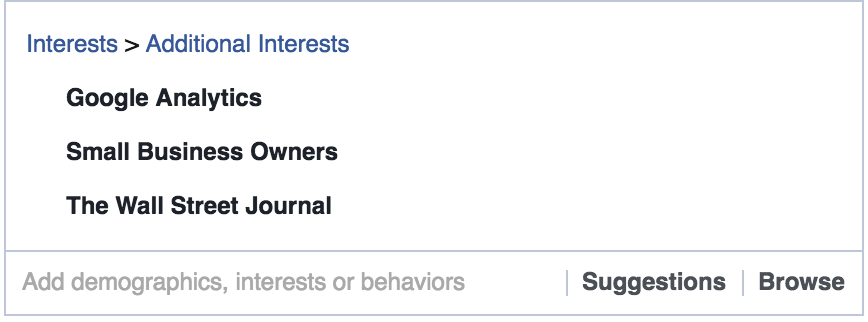
When Not to Use Indirect Targeting?
When you need fast conversions and have no patience or time, this method won’t work for you. You probably won’t see high conversion rate from that traffic at the very beginning, and may even attract some non-relevant traffic as well.
What Is The Best Tactic?
The idea is to combine both tactics and use the advantages of each tactic.
As we described in the beginning, it is expensive to generate leads and sales in the B2B market, therefore it is extremely important to create a great sales funnel that will have a higher probability of closing the deal at the end of the day.
In order to do that, you should know a fundamental concept of the Inbound Marketing Methodology – The Buyer’s Journey! The Buyer’s Journey is the process each person goes through from the moment there is an interest in finding a solution to the problem, up to the moment they decide to buy.
 > Download our free guide for more tips on lead generation for your company.”/>
> Download our free guide for more tips on lead generation for your company.”/>
The Three Stages of the Buyer’s Journey:
- Awareness: The moment the person realizes the problem exists, and is strategizing around what to do.
- Consideration: This stage prompts the evaluation of different solutions for the problem. The buyer is trying to understand what is the best fix from all the options there are in the market.
- Decision: This is when the buyer wants to decide which brand will deliver the best results for him. There is now consideration between several companies that offer the same solution.
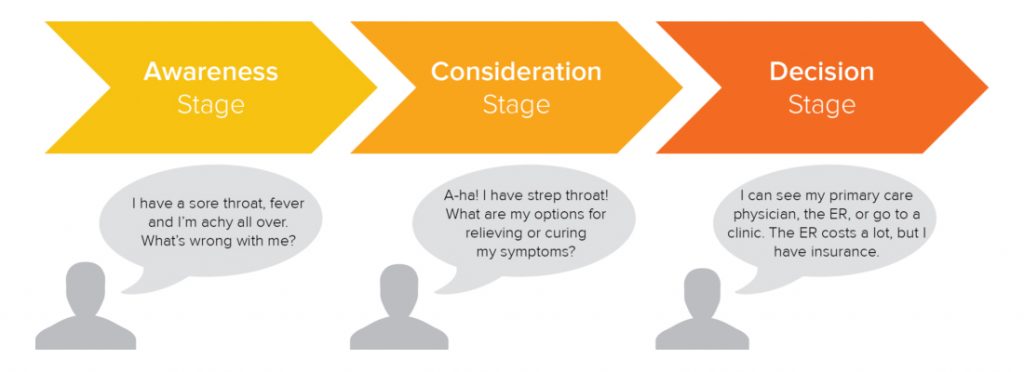
With the buyer’s journey, we understand that we can now prepare our sales funnel and create the best campaign for the B2B audience.
The sales funnel also divides into three parts:
TOFU – Top Of The Funnel:
At the top of the funnel we normally try to give our audience great content that will help them find different solutions for their problem, and show them that they have a fix for their situation.
Blogging, social media, articles, videos or any other content are used to raise their awareness about the solutions.
MOFU – Middle Of The Funnel:
In the middle of the funnel, we first want to convert cold traffic into a MQL (Marketing Qualified Lead). This is done by downloading a simple guide, reading a blog post or commenting on a relevant Facebook post. During this stage, content focus more on benefits of our product or service, and how it can help them in the future. Also at this stage the user is more qualified to consider using our solution, so direct offers may be in play as well.
BOFU – Bottom Of The Funnel:
The last stage is the closing deal. Here you should handle any objections the user may have before buying. The most effective content include successful case studies, testimonials, guarantees or smart pricing.
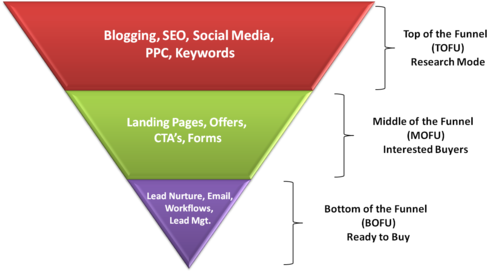
Most marketers and advertisers tend to compete for the attention of the B2B audience when they are at the second stage of the funnel, which is mostly expensive and highly competitive. There is no need to give up on it completely, but it is very important to give more attention to TOFU, where we can get much cheaper traffic and a bigger audience with less competition. After capturing their attention, we can then follow them up to the other stages of the funnel.
Here’s a simple explanation on how to do it:
- Long tail Keyword Research: You should look for long tail keywords that have high search volume and little competition. From here, think about content with real value that you can create with those keywords in mind.
- Cheap Traffic Sources: First, optimize your content for Google search results. If you find powerful keywords, this can equate to great traffic opportunities. It is also very easy to drive traffic for solid content from all social media networks. Whether it’s Facebook, LinkedIn, Twitter or others, people love great content and most likely will engage if it’s truly connecting with them.
- Pixel Them: When visitors visit your content you can “paint” them with special pixels, and then follow them with different medias. With tools like Google Analytics and Facebook Ads, you can create different pixel lists and segment them by interactions and demographics
- Direct Offers Campaigns: after they have expressed some interest in your message, you can then place your offers in front of your captivated audience on almost any media you want: Facebook Ads, Google Adwords, LinkedIn, Twitter, etc..
With this strategy we achieve:
- Cheap Traffic
- Bigger Exposure
- Better Leads
- Higher Conversions and More Sales
Here’s a quick example on how this method can be implemented into your business:
Let’s say you have a product for small businesses. You can see there are several hundreds of searches per month for terms like: “blogging for business” or “blog for business”.
You can create an interesting article about “7 advantages blogging for business has over other marketing methods”.
This article (with some SEO effort) can get to the first page in Google and drive consistent traffic to your website. You can also use social media and advertising platforms to promote this content and drive cheap traffic to your website.
Inside your article you can leave CTA’s (calls to actions) to your offer or to “Lead Magnets” where the visitors can leave their email to receive further great content. All the while, the visitors are pixelized to your remarketing lists and are now ready to see your offers.
Your remarketing lists can be also segmented by visitor behavior and interaction with your content. You should test several combinations until you find your winning and most converting funnel.
As you can see, the old method of direct offer targeting, especially for B2B audience, is getting more competitive and expensive. People are smarter than before and have less patience for annoying ads for things they have never expressed interest in. Nevertheless, the opportunity with B2B lead generation tactics is bigger than ever, as not many companies have adopted the Inbound Marketing Methodology yet.
If you want to win the game in 2017, you should join the movement and implement the tactics that are proven to work.


